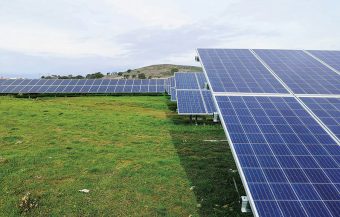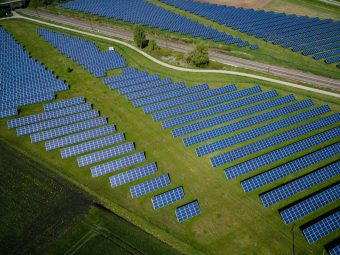The energy transition in Serbia has become a burning issue in recent years, especially after a significant increase in the capacity of renewable energy sources (RES). However, despite Serbia managing to almost double these capacities compared to 2022, it still lags behind many countries in the region. In an effort to understand why this is the case, we spoke with Jovan Rajić, the founder and head of the legal team at the Regulatory Institute for Renewable Energy and Environment (RERI), who revealed the main challenges Serbia faces on its path to energy transition and outlined key steps that can lead us to the desired goal.

Mr Rajić explains that the increase in RES capacity in Serbia is partly a result of the adoption of the new Energy Law, which established a solid legal framework for further sector development. However, issues arose due to delays in adopting secondary legislation, resulting in the first auctions occurring only last year. Although these auctions represent a significant step forward, our interlocutor reminds us that they were completed with partial success, particularly regarding solar and wind energy projects. He also adds that investors in the energy sector expect legal certainty and a clear and predictable business environment based on market principles and competition rules. Although Serbia has significant natural potential for RES development, especially in the solar and wind areas, our interlocutor notes that the current business environment is not attractive enough.
IN FOCUS:
- New Chargers For Improving E-Mobility
- How Can Residental Communities Take Advantage of the Energy Transition
- 500 Million Euros Annually for Renewable Energy Sources
“What every country needs to provide for investors is legal certainty and a clear and predictable business environment based on market principles, competition rules, and equal opportunities for all market participants. If this exists, and considering the undeniable natural potential that our country has for developing RES projects, especially in solar and wind, then the interest of investors should not be questioned at all. Unfortunately, the business environment in our country is such that it does not guarantee the fulfillment of all these prerequisites I mentioned, so maybe this is where we should look for the reasons for this lag behind the region. The high level of corruption in all areas of society and direct contracts have not unfortunately spared the energy sector”, says Mr. Rajić.
He underlines that the so-called strategic partnerships, recognized in the Energy Law, are not necessarily the solution to these problems. For instance, last year’s tender from the Ministry of Mining and Energy for the construction of solar power plants with a capacity of 1 GW caused controversy due to restrictive conditions that are hard to fulfill.
Goals by 2030 – Ambition or Reality?
The recently adopted Integrated Plan for Energy and Climate sets ambitious goals for Serbia, stating that by 2030, 45 percent of electricity should come from RES. However, the question arises as to how realistic these goals truly are. Namely, the Energy Community Ministerial Council set a target of 40.7 percent of RES in gross final consumption for Serbia by 2030, which many experts have assessed as overly ambitious.

“I have the impression that in Serbia, no strategic documents, such as plans, strategies, etc., are given due consideration. These documents should be prepared according to the highest possible standards of professional involvement and participation and informing the relevant public so that the end of the process yields solutions that will outline the path for all relevant regulations and their implementation. However, public policy documents are viewed as legally non-binding acts, which we adopt just to tick off some item of a specific accession chapter or to receive a positive assessment from the Energy Community”, our interlocutor adds. He also points out that a realistic goal has been set only for Bosnia and Herzegovina and how relevant regional institutions approach drafting these documents and setting goals, which they consider non-binding in a broader context.
Instead, Serbia must abandon the practice of adopting strategic documents solely to fulfill formal obligations to international bodies and focus on creating concrete, achievable plans that will enable a sustainable energy transition.
“Without a specifically devised, clear, and realistic action plan or defining how certain goals can be achieved, it won’t be possible to accomplish them. It seems that decision-makers are hoping for some miracle, wishing for a “market-driven energy transition” that will save them and help them fulfill their commitments. I am afraid that won’t happen on its own. At least not in a sustainable way”, Mr Rajić warns.
Interview by Milena Maglovski
Read the whole interview in the new issue of the Energy portal Magazine ENERGY TRANSITION

